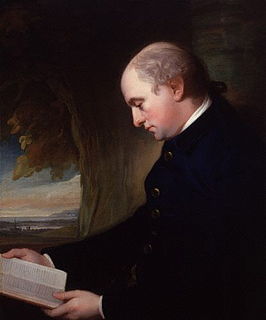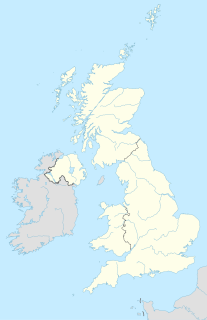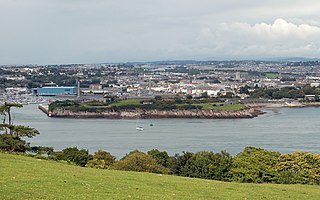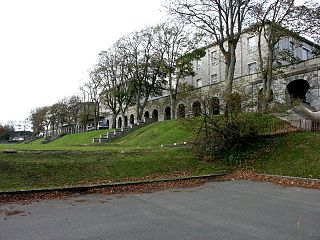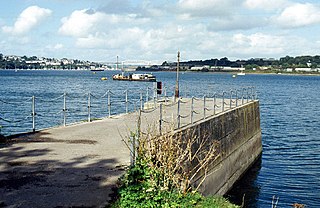
Hamoaze House is a large detached house on Mount Wise, Devonport, Plymouth, built in 1795 as the home of the Commander-in-Chief, Plymouth. It should not be confused with the earlier Admiralty House, Mount Wise (originally known as Government House), built 1789-93 as the home of the military Governor of Plymouth.
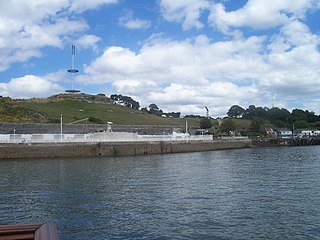
Mount Wise is a historic estate situated within the historic parish and manor of Stoke Damerel and situated about one mile west of the historic centre of the city of Plymouth, Devon. It occupies "a striking waterfront location" with views across Plymouth Sound to Mount Edgcumbe and the English Channel. Until 2004 it was a headquarters for senior Admiralty staff and was inaccessible to the public.
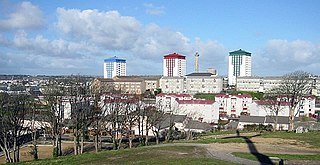
Devonport, formerly named Plymouth Dock or just Dock, is a district of Plymouth in the English county of Devon, although it was, at one time, the more important settlement. It became a county borough in 1889. Devonport was originally one of the "Three Towns" ; these merged in 1914 to form what would become in 1928 the City of Plymouth. It is represented in the Parliament of the United Kingdom as part of the Plymouth Sutton and Devonport constituency. Its elected Member of Parliament (MP) is Luke Pollard, who is a member of the Labour Party. The population of the ward at the 2011 census was 14,788.

The Commander-in-Chief, Plymouth was a senior commander of the Royal Navy for hundreds of years. Plymouth Command was a name given to the units, establishments, and staff operating under the admiral's command. Prior to 1914 the holder of the office was often referred to as Commander-in-Chief, Devonport. The Commanders-in-Chief were based in what is now Hamoaze House, Devonport, Plymouth from 1809 to 1934 and then at Admiralty House, Mount Wise, Devonport from 1934 until 1996.
It is listed Grade II on the National Heritage List for England. [1]
The National Heritage List for England (NHLE) is England’s official list of buildings, monuments, parks and gardens, wrecks, battlefields and World Heritage Sites. It is maintained by Historic England and brings together these different designations as a single resource even though they vary in the type of legal protection afforded to each. Conservation areas do not appear on the NHLE since they are designated by the relevant local planning authority.
